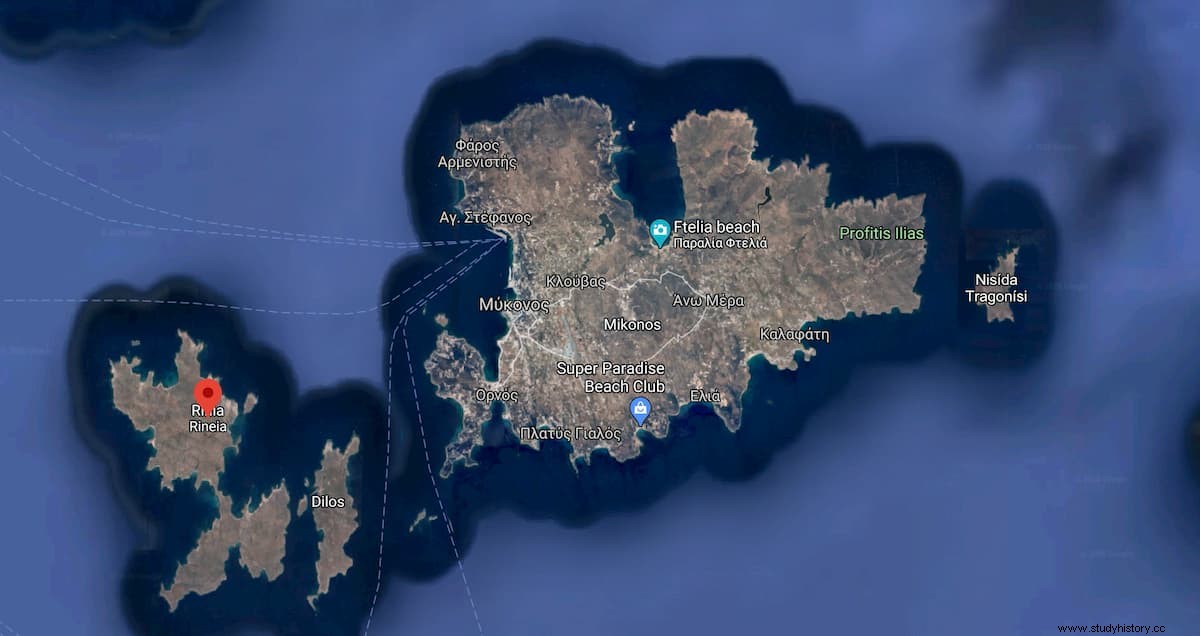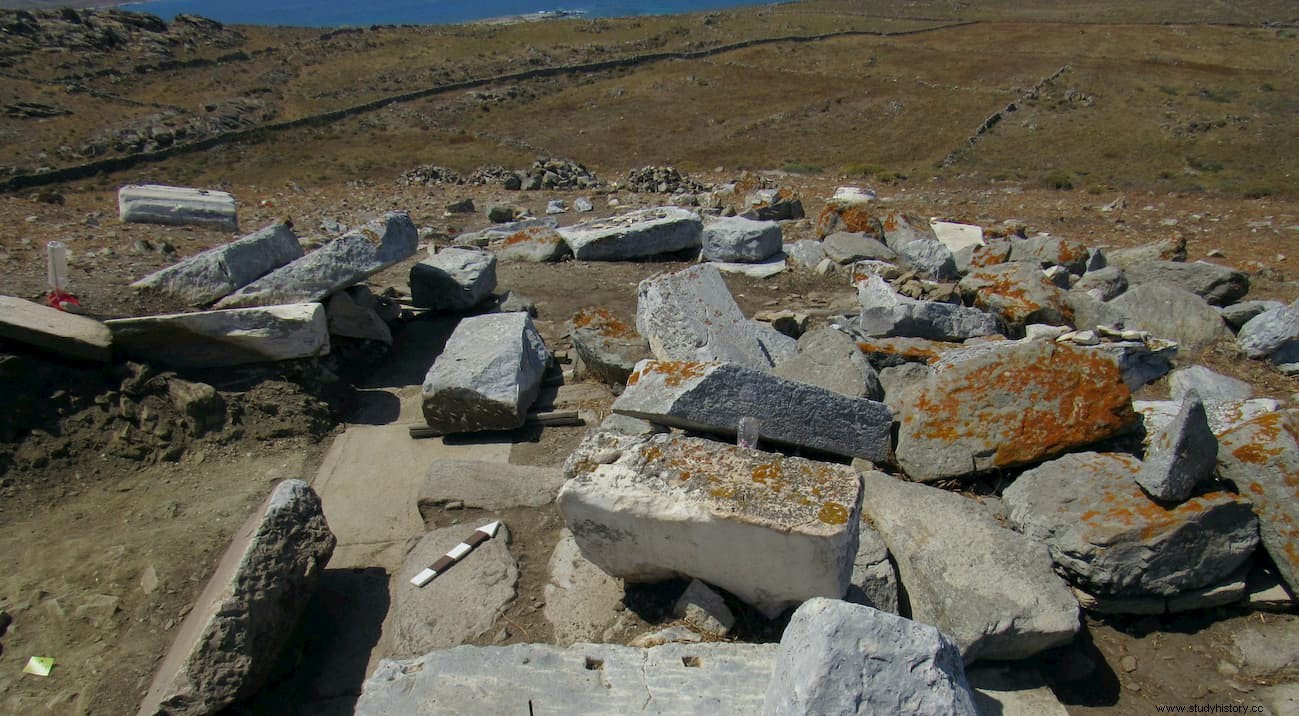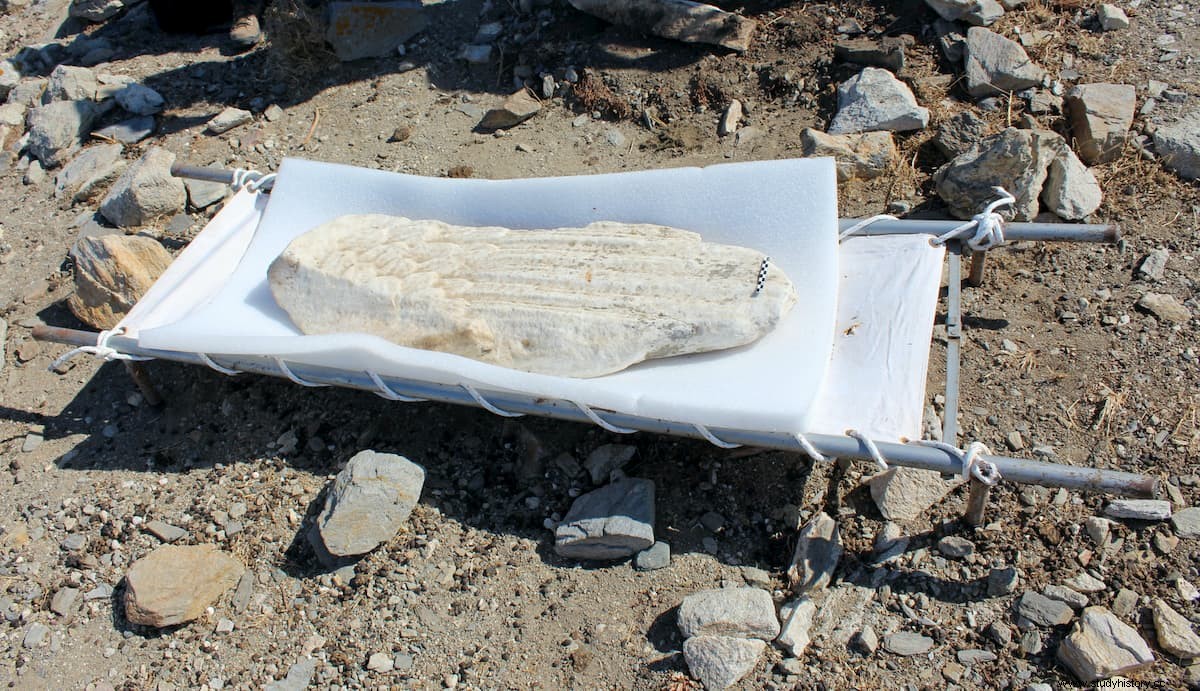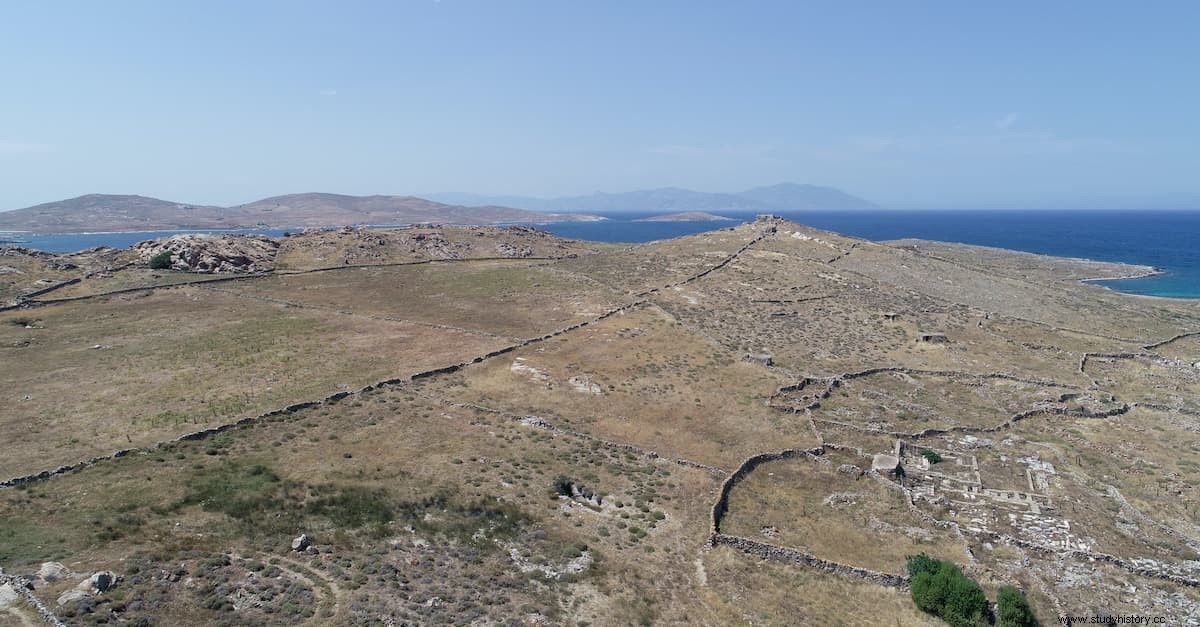Renea (or Rinia) is a small island located west of Delos, in the Cyclades archipelago, from which it is separated by a channel of about 700 meters. This was where, in ancient times, women who were going to give birth took refuge, and where those who were about to die were transferred to Delos, since both birth and death were prohibited there.

Renea or Great Delos as the population of Mykonos calls it, a name that indicates the timeless link between the two islands, it is today divided into lots that the municipality of Mykonos, on which it depends administratively, leases to its inhabitants for agricultural and livestock use.
Also known as Ortygia, according to legend it was the birthplace of Apollo's twin sister, Artemis. The southern part belonged to the territory of ancient Delos and functioned as the place of birth and death of its inhabitants. There, the sanctuary of Apollo Delio owned agricultural land that was leased to individuals, obtaining great benefits, according to the inscriptions of Delos. It also had a shrine dedicated to Artemis. In the northern part (the current Epano Delos ), there was the city of Renea, with its cemeteries, farms, numerous sources of wealth, and its shrines.

In the late 19th and early 20th centuries, the first two Cycladic curators of antiquities, Dimitrios Stavropoulos and Dimitrios Pippas, conducted limited but significant excavations at Renea, although they failed to fully document their finds. Excavations and in situ work in the necropolis and in the city of Renea were later carried out by the former 21st Ephorate of Prehistoric and Classical Antiquities, as well as by the French School of Archaeology.
Stavropoulos began exploring the southern east coast of Renea in 1898. The antiquities had been looted for centuries by gravediggers, so today you can find Renean grave stelae not only in Greek museums but also in museums and collections. from abroad; Venice, Verona, London, Oxford, Cambridge, Paris, Vienna, Oslo, Odessa, Saint Petersburg and Copenhagen.

Stavropoulos excavated graves, revealing part of this unique city of births and deaths . His guide was the famous passage from the third book of the History of the Peloponnesian War from Thucydides that describes how the Athenians, in the winter of 426/5 BC, proceeded to a complete cleansing of Delos (a first partial cleansing had already been done by Pisistratus) raising all the dead and their coffins from Delos, ordering henceforth that no one should die or be born on the island, but that the dying and women about to give birth be transported to Renea .
120 years after the first excavations, archaeologists, with the means offered by modern technology, returned to Renea both to complete the documentation of the ancient excavations and the remains looted over the centuries from the ancient necropolis and to carry out a rigorous study of surface throughout the island, locate, document and analyze all the archaeological sites and ruins, identify Renea geologically and excavate a site in its southern part.

Near the Delian necropolis the field where the great sarcophagus of the Roman matron Tertia Horaria and the great lion of Renea are located was cleared to document the many visible funerary structures and the many marble architectural elements, altars, sarcophagi, etc. Further north, the already excavated large underground funerary building with niches (columbarium) was cleared and mapped, as well as the remains of a domed tomb cap that bears strong similarities to the unique dome of the Agora of the Competialists on Delos.
All antiquities were documented by orthography and visible remains were recorded in a geographic information program with a prospectus at each monument, while for security reasons small sections mainly of relief stelae were collected and taken to Delos.

As part of the surface survey, the ruins of ancient farms belonging to the sanctuary of Apollo Delius, as well as an unknown ancient road, were located and documented. At the same time, excavations began at Chomasovouni, an important site on the edge of the Delian necropolis, with impressive marble architectural fragments visible and the foundations of a building, in direct visual contact with Delos. This is probably the site where the sanctuary of Artemis was.
According to the accounts of the Delians in charge of the sacred rites, an ascending path led to the sanctuary, which in addition to the temple included an altar, a dining room and houses. Cleanup of the site was carried out, as well as spelling, surveying and mapping of architectural remains, as well as clearing of trees and bushes and an intensive survey of the surface throughout the hill. Near the top, where the temple site is believed to be, part of a foundation was unearthed, probably from a large altar. Remarkable fragments of sculpture were collected from the same place, mainly parts of bird statues, which were taken to Delos.

A geological map of the island was made as part of the same investigation, with the aim, among other things, of locating the quarries. The investigation yielded very interesting results in relation to the origin of the structural material of the buildings, not only from Renea but also from Delos, such as the foundations of the temple of Apollo.
An important aspect of the research is the documentation of all the remains from the Byzantine, post-Byzantine and modern times. Among them, relevant today, are the ruins of the Delos (Renea) public quarantine station on the beach, with the eloquent place name of Karantina. From the mid-19th to the early 20th centuries, during cholera outbreaks and plague epidemics, both infected and uninfected ships sailing from the Mediterranean to Greek ports were quarantined there, mandatory for 5-40 days. In fact, the Alexandrian poet Constantine Cavafy spent two days there in 1901 on his first trip to Greece.
